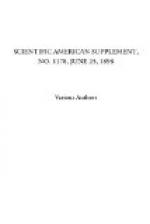If he could not use it, then he would not be getting the very advantage for which he employed this particular carpenter, and if he did get that right, he would be getting all that he employed the carpenter for, and that right would not be at all lessened by the fact that the carpenter had a patent under which he could license other people. The patent does not constitute the right to make or use or sell, for such right is enjoyed without a patent. The patent constitutes the “exclusive” right to make, sell or use, and this the shop owner does not get unless he specially bargains for it. Implied licenses stand on delicate ground, and where men employ people of ingenious talent, with the understanding that the results of such talent developed during the employment shall inure to the benefit of the employer, there is only one safeguard, and that is to found the employment on a contract unmistakably setting forth the understanding.
NEW PURPOSE.
If an invention is old, it is old regardless of any new purpose to which it is put. It is no invention to put a machine to a new use. If an inventor contrives a meritorious machine for the production of coins or medals, his invention is lacking in novelty if it should appear that such a machine had before been designed as a soap press, and this fact is not altered by any merely structural or formal difference, such as difference in power or strength, due to the difference in duty. The invention resides in the machine and not in the use of it. If the soap press is covered by an existing patent, that patent is infringed by a machine embodying that invention, regardless of whether the infringing machine be used for pressing soap or silver. And it is no invention to discover some new capacity in an old invention. An inventor is entitled to all the capacities of his invention.




